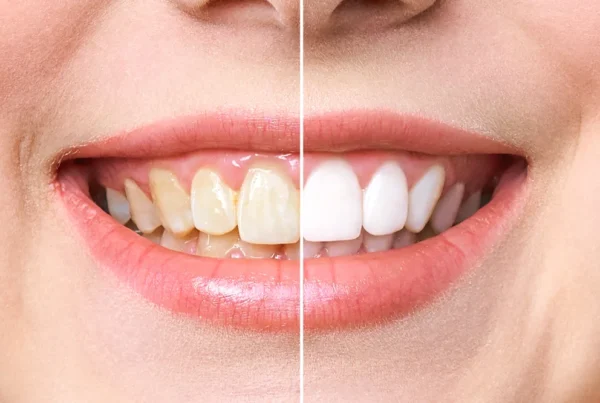Teeth bleaching is one of the most requested cosmetic dental procedures among patients in Grand Prairie—and for good reason. A whiter smile has the power to transform your confidence, brighten your presence in social and professional settings, and leave a lasting impression. But beneath the dazzling results lies a process grounded in dental science and meticulous care. At Grand Prairie Family Dental, we prioritize both brilliance and biological safety in every teeth bleaching plan.
Understanding the chemistry behind whitening agents and how different types of stains respond allows us to offer results that are safe, predictable, and tailored to your needs. Whether you’re preparing for a special event in the DFW area or just want to refresh your smile, we’re here to help you achieve that goal—safely and comfortably.
How Bleaching Agents Work to Remove Stains
The active ingredients in whitening treatments are hydrogen peroxide and carbamide peroxide. These oxidizing agents break apart molecular stains lodged in the enamel and dentin layers of your teeth. When applied in the right concentration and for the right duration, they lift discoloration without compromising your tooth structure.
Hydrogen peroxide is faster-acting and ideal for in-office treatments where a dentist supervises every step. Carbamide peroxide, which breaks down into hydrogen peroxide over time, is slower and gentler—making it a better fit for take-home trays. At Grand Prairie Family Dental, we determine the ideal formula based on your tooth anatomy, enamel thickness, and past sensitivity.
Understanding how these agents work helps us select the safest and most effective solution for you. Our approach avoids overuse, protects enamel, and delivers maximum results with minimum risk.
Matching Whitening Strategy to Stain Type
Tooth stains can be broadly categorized as extrinsic (surface-level) or intrinsic (deep within the tooth). Extrinsic stains come from external sources like coffee, tea, tobacco, and red wine. These are the most responsive to whitening, often showing dramatic improvement in just one or two sessions.
Intrinsic stains, on the other hand, are more complex. These may originate from internal factors like aging, medication use (especially tetracycline), or trauma. In these cases, the standard approach may need to be adjusted with higher concentrations, longer exposure, or supplemental treatments like veneers.
At Grand Prairie Family Dental, we conduct a full stain analysis as part of your whitening consultation. This ensures we select the right treatment path and set realistic expectations for what’s achievable.
Comparing In-Office Whitening to At-Home Kits
While at-home bleaching kits are widely available, they often fall short in results and safety. Most contain lower concentrations of bleaching agents, meaning slower, less noticeable results. Worse, improper usage can cause gum irritation or enamel damage.
In contrast, in-office whitening at Grand Prairie Family Dental offers:
- Higher concentration gels activated by light or laser technology
- Custom-fit trays that protect gum tissue and improve evenness
- Supervised application by trained professionals for safety and precision
Our in-office systems produce faster results with minimal discomfort—often achieving your target shade in just one visit. We also offer professional-grade take-home trays as part of your maintenance plan, ensuring that your brightened smile stays fresh for years.
How We Address Sensitivity and Tissue Protection
Tooth sensitivity is one of the most common concerns in bleaching—and one we take seriously. Our team begins with a sensitivity screening to assess enamel porosity and nerve reactivity. If needed, we apply fluoride or potassium nitrate-based desensitizers before starting your session.
Gum protection is equally important. During in-office procedures, we use retraction tools and protective gels to prevent the whitening agent from contacting soft tissues. This greatly reduces the risk of post-treatment irritation or burning.
These safety measures make a significant difference, allowing you to enjoy whitening without discomfort or lasting sensitivity.

Developing a Customized Whitening Plan
Every whitening plan we design at Grand Prairie Family Dental begins with a comprehensive evaluation. We assess your stain type, tooth health, gum condition, and any restorations. Fillings, veneers, and crowns do not respond to bleaching agents, so we include a plan to update them post-treatment if needed.
Based on this assessment, we design a whitening roadmap that might include one of the following:
- A single powerful in-office treatment for fast results
- A gradual at-home tray system for sensitive patients
- A combination plan with in-office and take-home sessions
This individualized strategy ensures that you achieve the best results possible, safely and efficiently.
Knowing When to Pause or Adjust Treatment
Whitening isn’t always a linear process. Some patients may experience symptoms that require a break in treatment or a shift in strategy. These signs include sharp, prolonged pain, gum inflammation, or visible chalky patches on enamel.
At Grand Prairie Family Dental, we encourage open communication. If something feels off, we pause treatment and re-evaluate. In some cases, alternative treatments such as dental bonding or porcelain veneers may be a better long-term solution.
By being responsive and flexible, we protect both your smile and your comfort.
Continuing Care After Whitening
Your treatment doesn’t end when you leave the office. Our team provides detailed post-whitening care instructions to help maintain your results. We recommend:
- Avoiding dark foods and drinks for 48 hours after treatment
- Using remineralizing toothpaste to strengthen enamel
- Scheduling check-ins for touch-up evaluations
With proper care, many patients retain their results for one to three years. Lifestyle habits like smoking or heavy coffee intake may shorten this window, but we’ll help you plan accordingly.
Maintaining a Bright Smile Between Sessions
Sustaining your whitening results comes down to daily habits. We educate each patient on:
- Using a soft-bristle toothbrush and gentle whitening toothpaste
- Drinking staining beverages with a straw to limit contact with teeth
- Rinsing after meals to reduce surface buildup
We also discuss dietary and lifestyle choices that influence staining. By building these habits into your routine, you extend the value of your treatment and maintain your radiance for the long haul.
Summary: Brightening with Science and Strategy
Teeth bleaching is more than a cosmetic treatment—it’s a clinically guided transformation that blends aesthetics with biological care. At Grand Prairie Family Dental, we use a strategic, patient-first approach to ensure every whitening experience is powerful, safe, and sustainable.
With personalized assessments, science-backed products, and comprehensive aftercare, we help patients across Grand Prairie and the DFW region achieve stunning results they feel confident about.
If you’re ready to safely brighten your smile under expert care, schedule a whitening consultation with Grand Prairie Family Dental today.
Frequently Asked Questions
Is teeth bleaching safe for my enamel?
Yes. We use only enamel-safe agents and monitor each session closely to ensure your tooth structure is protected throughout the process.
How long will the results last?
With proper care, results can last one to three years. Avoiding staining foods, smoking, and practicing good hygiene will help extend your brightness.
What if I have fillings or crowns?
Bleaching does not affect restorations. We may recommend replacing old fillings or crowns after whitening to match your new shade.
Book an appointment with Grand Prairie, TX’s top dentist, Dr. Khademazad, today. It’s the first step to a better smile and increased self-esteem. Call us at 972-988-0900.
Schedule Your Consultation Today!
Grand Prairie Family Dental
972-988-0900
2475 W Pioneer Pkwy
Grand Prairie, Texas, 75051






